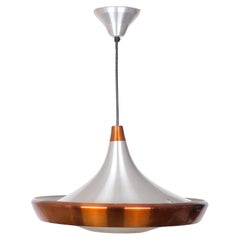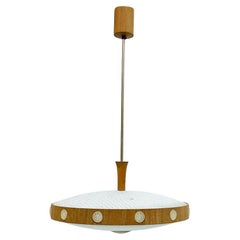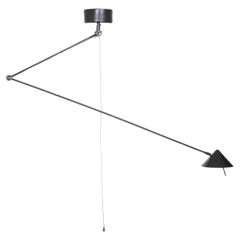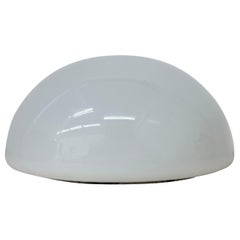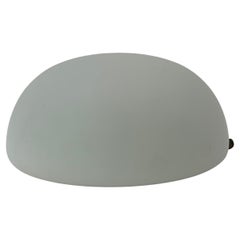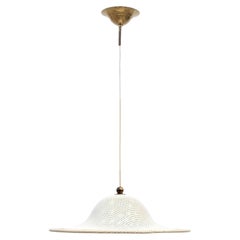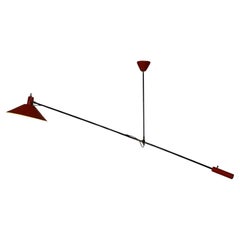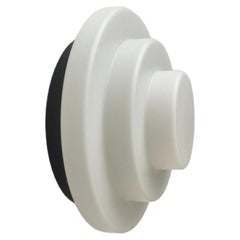Dutch Ceiling Lamp
Vintage 1970s Dutch Mid-Century Modern Chandeliers and Pendants
Aluminum
Mid-20th Century Dutch Chandeliers and Pendants
Glass, Wood
Vintage 1980s Dutch Post-Modern Chandeliers and Pendants
Metal
Vintage 1930s Dutch Bauhaus Wall Lights and Sconces
Glass
Vintage 1930s Swedish Mid-Century Modern Flush Mount
Glass
Vintage 1930s Dutch Mid-Century Modern Flush Mount
Metal
Vintage 1950s Mid-Century Modern Chandeliers and Pendants
Metal, Brass
Vintage 1950s Flush Mount
Metal
20th Century Dutch Mid-Century Modern Wall Lights and Sconces
Metal
Mid-20th Century Dutch Mid-Century Modern Flush Mount
Aluminum
Vintage 1950s Dutch Mid-Century Modern Chandeliers and Pendants
Metal
Mid-20th Century Dutch Mid-Century Modern Wall Lights and Sconces
Brass
Mid-20th Century Dutch Mid-Century Modern Wall Lights and Sconces
Brass
Mid-20th Century Dutch Mid-Century Modern Wall Lights and Sconces
Brass
Vintage 1930s Dutch Art Deco Flush Mount
Glass, Bakelite
Vintage 1930s Dutch Art Deco Flush Mount
Glass, Bakelite
Vintage 1930s Dutch Art Deco Flush Mount
Glass, Bakelite
Vintage 1960s Dutch Mid-Century Modern Wall Lights and Sconces
Metal
Vintage 1960s Dutch Mid-Century Modern Chandeliers and Pendants
Metal
Vintage 1950s Dutch Space Age Chandeliers and Pendants
Aluminum
20th Century Dutch Art Deco More Lighting
Copper
Vintage 1960s Dutch Mid-Century Modern Chandeliers and Pendants
Glass
Vintage 1960s Mid-Century Modern Flush Mount
Metal, Aluminum, Steel
Vintage 1960s Dutch Flush Mount
Wood
Vintage 1960s Dutch Wall Lights and Sconces
Aluminum, Brass
Vintage 1930s Dutch Mid-Century Modern Flush Mount
Glass
Vintage 1950s Dutch Mid-Century Modern Chandeliers and Pendants
Metal
Vintage 1970s Dutch Mid-Century Modern Chandeliers and Pendants
Metal
Vintage 1970s Dutch Mid-Century Modern Chandeliers and Pendants
Metal
Vintage 1970s Dutch Art Deco Flush Mount
Glass
Vintage 1950s Dutch Mid-Century Modern Chandeliers and Pendants
Metal, Brass
Vintage 1950s Dutch Mid-Century Modern Chandeliers and Pendants
Metal
Vintage 1950s Dutch Mid-Century Modern Chandeliers and Pendants
Metal
Vintage 1930s Dutch Bauhaus Flush Mount
Glass
Vintage 1950s Dutch Mid-Century Modern Chandeliers and Pendants
Metal
Vintage 1950s Dutch Mid-Century Modern Chandeliers and Pendants
Metal
Vintage 1970s Dutch Modern Chandeliers and Pendants
Metal
Vintage 1950s Dutch Mid-Century Modern Wall Lights and Sconces
Metal
Vintage 1950s Dutch Mid-Century Modern Wall Lights and Sconces
Metal
Vintage 1970s Dutch Mid-Century Modern Flush Mount
Metal
Vintage 1970s Dutch Mid-Century Modern Chandeliers and Pendants
Metal
Vintage 1950s Dutch Flush Mount
Metal, Aluminum
Mid-20th Century Dutch Industrial Wall Lights and Sconces
Iron
Vintage 1950s Dutch Industrial Chandeliers and Pendants
Metal
Vintage 1950s Dutch Mid-Century Modern Chandeliers and Pendants
Metal
Vintage 1950s Dutch Mid-Century Modern Chandeliers and Pendants
Metal
Vintage 1950s Dutch Mid-Century Modern Chandeliers and Pendants
Metal, Aluminum
Vintage 1970s Chandeliers and Pendants
Leather, Fabric, Cork
Vintage 1950s Dutch Mid-Century Modern Wall Lights and Sconces
Metal
Vintage 1950s Dutch Mid-Century Modern Chandeliers and Pendants
Metal
Vintage 1960s Dutch Chandeliers and Pendants
Chrome
Vintage 1960s Dutch Chandeliers and Pendants
Wood, Glass
Vintage 1950s Dutch Mid-Century Modern Chandeliers and Pendants
Metal
Vintage 1950s Dutch Mid-Century Modern Chandeliers and Pendants
Aluminum, Metal
Vintage 1950s Dutch Mid-Century Modern More Lighting
Metal
Dutch Ceiling Lamp For Sale on 1stDibs
How Much is a Dutch Ceiling Lamp?
Finding the Right Lighting for You
The right table lamp, outwardly sculptural chandelier or understated wall pendant can work wonders for your home. While we’re indebted to thinkers like Thomas Edison for critically important advancements in lighting and electricity, we’re still finding new ways to customize illumination to fit our personal spaces all these years later. A wide range of antique and vintage lighting can be found on 1stDibs.
Today, lighting designers like the self-taught Bec Brittain have used the flexible structure of LEDs to craft glamorous solutions by working with what is typically considered a harsh lighting source. By integrating glass and mirrors, reflection can be used to soften the glow from LEDs and warmly welcome light into any space.
Although contemporary innovators continue to impress, some of the classics can’t be beat.
Just as gazing at the stars allows you to glimpse the universe’s past, vintage chandeliers like those designed by Gino Sarfatti and J. & L. Lobmeyr, for example, put on a similarly stunning show, each with a rich story to tell.
As dazzling as it is, the Arco lamp, on the other hand, prioritizes functionality — it’s wholly mobile, no drilling required. Designed in 1962 by architect-product designers Achille & Pier Giacomo Castiglioni, the piece takes the traditional form of a streetlamp and creates an elegant, arching floor fixture for at-home use.
There is no shortage of modernist lighting similarly prized by collectors and casual enthusiasts alike — there are Art Deco table lamps created in a universally appreciated style, the Tripod floor lamp by T.H. Robsjohn-Gibbings, Greta Magnusson Grossman's sleek and minimalist Grasshopper lamps and, of course, the wealth of mid-century experimental lighting that emerged from Italian artisans at Arredoluce, FLOS and many more are hallmarks in illumination innovation.
With decades of design evolution behind it, home lighting is no longer just practical. Crystalline shaping by designers like Gabriel Scott turns every lighting apparatus into a luxury accessory. A new installation doesn’t merely showcase a space; carefully chosen ceiling lights, table lamps and floor lamps can create a mood, spotlight a favorite piece or highlight your unique personality.
The sparkle that your space has been missing is waiting for you amid the growing collection of antique, vintage and contemporary lighting for sale on 1stDibs.
Read More
Hans Bergström’s Monumental Chandeliers Are Made for Grand Spaces
Designed by a giant of Swedish lighting, the large-scale fixtures bring major drama.
This Paavo Tynell Chandelier Is a Radiant Bouquet
The alluring pendant light exemplifies the designer’s winsome mid-career work.
Ettore Sottsass Captures a Shooting Star in This Rare 1970s Floor Lamp
Before founding the Memphis Group, Sottsass bent the rules of lighting design with the wonderfully wavy Cometa.
You Don’t Need a Fictional Fairy to Get This Real Pinocchio Lamp
Warm chalet style meets cool Bauhaus functionality in Pietro Cascella’s cleverly carved creation.
Why Is Italy Such a Hotbed of Cool Design?
Patrizio Chiarparini of Brooklyn’s Duplex gallery sheds light on the lasting legacy of Italy’s postwar furniture boom.
With a High-Tech Flagship and Cool Collabs, Lladró Is Breaking the Mold for Porcelain Production
Thanks to its new leadership, the Spanish maker of figurines, busts and lighting is on a mission to update the art of porcelain for the 21st century.
Christopher Tennant’s Lamps and Dioramas Evoke Sunny Days and Seaside Locales
The former magazine editor blends elements of the Far East and America’s eastern shores, bringing wit and delight to his handmade, upcycled designs.
Paavo Tynell’s Snowflake Chandelier Warms Up Any Room
This circa 1950 piece by the legendary Finnish lighting designer spent the past several decades in a family's home in Michigan.
